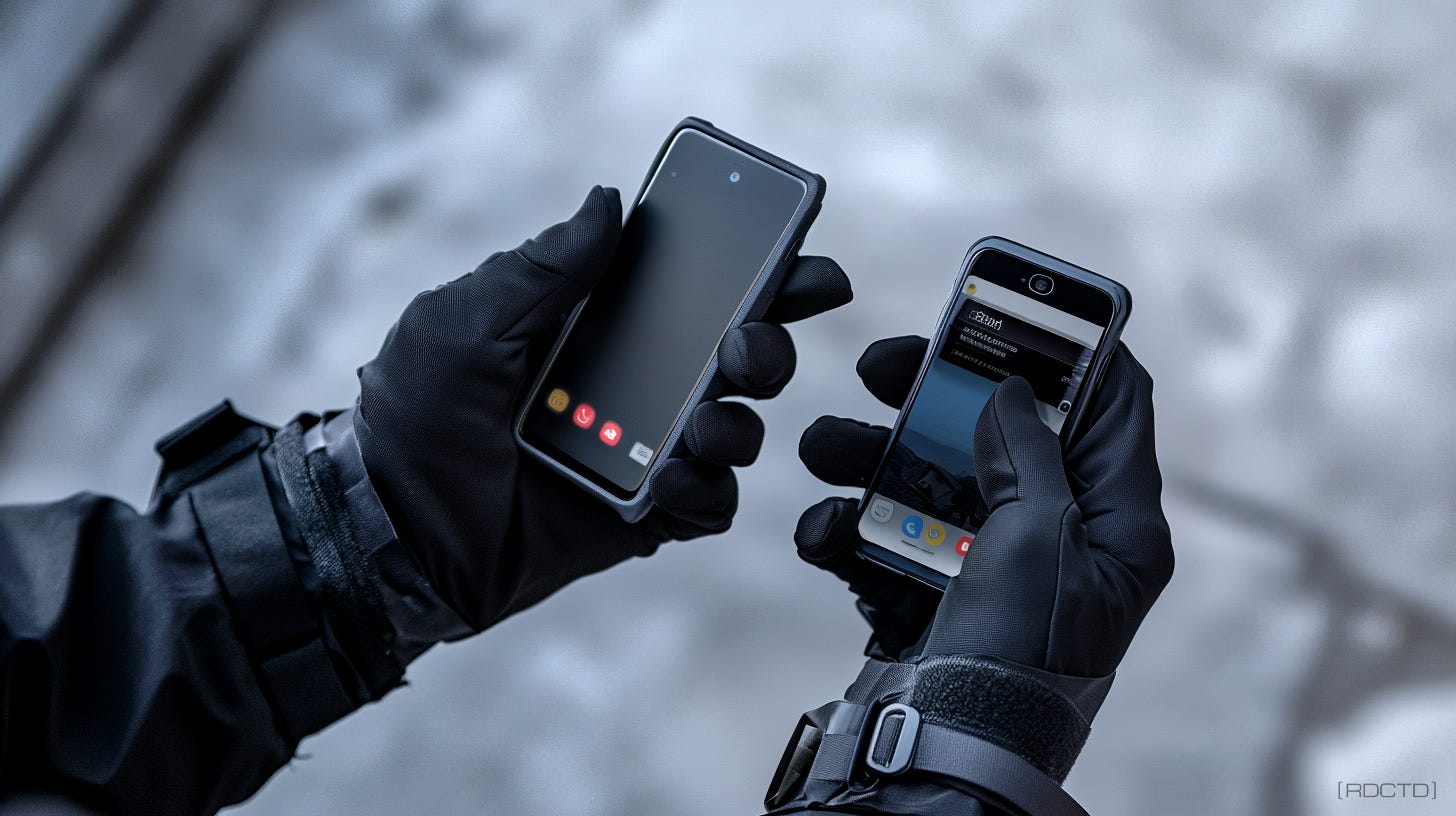Burner Phones VERSUS Encrypted Messaging Apps
Burner phones and encrypted messaging apps are two tools operatives use to keep communications secure and compartmentalized, but they serve different purposes depending on the level of threat and operational needs.
A burner phone is a disposable device - usually a cheap, prepaid phone that’s used temporarily and discarded to avoid tracking. It’s old-school tradecraft, relying on simplicity to minimize risk. Encrypted messaging apps, on the other hand, offer digital encryption to protect communication on a more sophisticated, technical level, but they come with their own set of challenges.
A burner phone’s primary advantage is its physical disconnect from any established identity or digital footprint. You can pick one up with cash at a random location, use it for a specific mission, and dump it once the task is complete. It’s extremely difficult to trace back to an operative if it’s used properly - no contracts, no real names, no repeat locations. In environments where surveillance is heavy, burner phones offer plausible deniability because the device itself isn’t tied to you long-term.
However, burner phones aren't completely foolproof. The signal metadata - things like cell tower connections and call logs - can still be tracked by sophisticated agencies or organizations. Even if you're not caught, patterns of use can raise suspicion. This is why operatives need to be careful about how and when burner phones are used, switching locations or times to avoid detectable patterns. Despite their simplicity, burner phones still create a trail if mishandled.
On the flip side, encrypted messaging apps provide strong end-to-end encryption, which prevents third parties from intercepting the content of your communications. These apps are perfect for day-to-day secure communications, where avoiding eavesdropping is crucial but complete anonymity is less of a concern. You can communicate over long distances, share documents, and even make calls with confidence that the data is protected from most forms of interception.
The problem with encrypted apps is that they require a device that’s usually connected to a personal identity - your smartphone. Even if the content of your messages is secure, using an encrypted app still exposes the fact that you're communicating. And if your device gets compromised, the encryption won’t save you. Plus, if you're in an operational setting where being seen with a phone raises red flags, the mere presence of encrypted apps could make you a target.
Burner phones and encrypted apps can complement each other when used strategically. For instance, an operative might use a burner phone to set up initial contact, then transition to an encrypted app for ongoing communication. Or, the operative might avoid using a personal device for sensitive operations and stick with burner phones exclusively. The choice depends on the level of surveillance and the type of communication you’re trying to protect.
At the end of the day, burner phones provide anonymity, while encrypted messaging apps offer security. An operative has to assess whether staying anonymous or protecting the content of the conversation is the priority, and adapt accordingly.
A key element of tradecraft is knowing when to use which tool, because in covert work, the wrong choice can have serious consequences.



